.
Protecting Humpback Whales in Costa Rica

.
Nuevas protecciones para las ballenas jorobadas en Costa Rica
By Dianna Bell with translation by Sarai Zelada
Por Dianna Bell con traducción de Sarai Zelada
On May 4th, the Costa Rican government announced an exclusion zone for heavy maritime traffic in Golfo Dulce, a narrow inlet on the southern Pacific coast of Costa Rica, and a critical habitat for spotted and bottlenose dolphins as well as a breeding ground for humpback whales. This zone is a major step toward the conservation of humpback whales and other marine species in the Eastern Pacific, and was achieved through the leadership of Dr. Hector Guzman of the Smithsonian Tropical Research Institute (STRI) accompanied and informed by data collected by the team of researchers and volunteers on the Earthwatch expedition Marine Mammals and Predators in Costa Rica.
Earthwatch lead scientist Lenin Oviedo (soon to be Dr. Oviedo, as he presents his dissertation in just a couple of weeks!), explained what this exclusion zone means for marine life in Golfo Dulce and what steps he hopes to take next in further securing this ecosystem.
And just to note, this is our first bilingual blog post. You will notice each section in both english and spanish. By including the native language of the country where this research took place, we hope to expand the reach and knowledge of this important environmental protection.
.

.
El 4 de mayo, Costa Rica creó zona de exclusión de tráfico marítimo pesado en Golfo Dulce, una entrada estrecha en la costa sur del Pacífico Costarricense, y un hábitat crítico para delfines manchados y mulares, así como un área de cría para las ballenas jorobadas. Esta zona es un gran paso hacia la conservación de las ballenas jorobadas y otras especies marinas en el Pacífico Oriental, y se logró gracias al liderazgo del Dr. Héctor Guzmán del Smithsonian Tropical Research Institute (STRI) acompañado e informado por los datos recopilados por el equipo de investigadores y voluntarios en la expedición de Earthwatch Marine Mammals and Predators in Costa Rica.
El científico principal de Earthwatch Lenin Oviedo (que pronto será el Dr. Oviedo, ya que presenta su disertación en solo un par de semanas!), explicó lo que significa esta zona de exclusión para la vida marina en Golfo Dulce y qué pasos espera seguir para proteger aún más este ecosistema.
Y solo para notar, esta es nuestra primera publicación de blog bilingüe. Notará cada sección en inglés y español. Al incluir el idioma nativo del país donde se realizó esta investigación, esperamos ampliar el alcance y el conocimiento de esta importante protección ambiental.
.
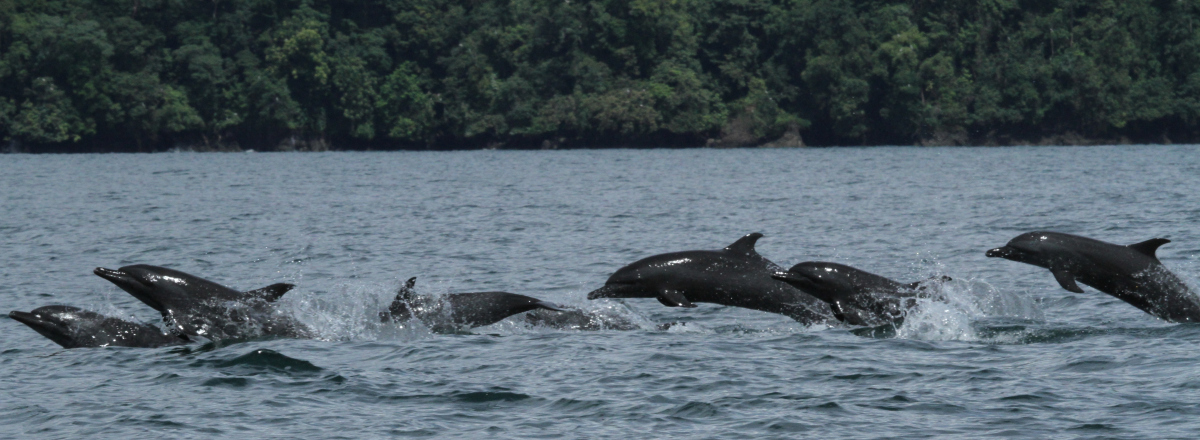
.
Earthwatch: What does this new exclusion zone mean for marine life in Golfo Dulce?
¿Qué significa esta nueva zona de exclusión para la vida marina en Golfo Dulce?
Lenin Oviedo: The exclusion zone is specifically designed to avoid collision of big maritime traffic, specifically big cargo ships, with humpback whales—mothers and calves. The biggest mortality issue with humpback whales, and with whales in general, is ship collisions. So this is just part of the strategy that we have been pursuing in order to conserve marine mammals in Golfo Dulce and Costa Rica. It’s not yet a Marine Protected Area, which is what we want. That’s our target. There are big big steps we have to make towards that. But this exclusion zone is providing a shipping channel that’s going to be away from the critical calving habitat of the humpback whales in Golfo Dulce.

The town of Golfito is one of the biggest commercial ports in the Pacific Ocean, and there are many plans for marinas inside the gulf. And if one marina is established, then that will be an open window for complete coastal development. And it will start with cruise ships and then who knows. So this is a really major achievement that we are very happy to have been part of.
La zona de exclusión está específicamente diseñada para evitar colisiones de gran tráfico marítimo, específicamente los grandes buques de carga, con las ballenas jorobadas: madres y terneros. El mayor problema de mortalidad de las ballenas jorobadas, y de las ballenas en general, es la colisión con los buques. Entonces, esto es solo parte de la estrategia que hemos estado siguiendo para conservar a los mamíferos marinos en Golfo Dulce y Costa Rica. Todavía no es un área marina protegida, que es lo que queremos. Ese es nuestro objetivo. Hay grandes pasos que tenemos que hacer hacia eso. Pero esta zona de exclusión está creando un canal de envío que estará lejos del sitio de parto crítico de las ballenas jorobadas en Golfo Dulce.
La ciudad de Golfito es uno de los puertos comerciales más grandes en el Océano Pacífico, y hay muchos planes para puertos deportivos dentro del golfo. Y si se establece un puerto deportivo, entonces dará paso al desarrollo costero completo. Y comenzará con cruceros y luego quién sabe. Así que este es un logro realmente importante del que estamos muy felices de haber formado parte.
.
Earthwatch: How did you feel when you received the news that the exclusion zone was secured?
¿Cómo se sintió al recibir la noticia de que la zona de exclusión estaba asegurada?
Lenin Oviedo: On May 4th, it was announced that the government of Costa Rica had made a law that the exclusion zone is now a legal provision from the country. I was really really happy. I was happy. It’s not only happiness—there’s a bit of pride in that like ‘oh my god, we did it!’ But you know, besides that, it’s a bit of a relief also. Because when you get to work in those places, and you get to spend more than ten years in that area, you only hope that things can still be okay and that you can keep seeing your whales, your dolphins, the animals that have given you so much joy and so much happiness because basically, I owe them my Ph.D. So you can only hope to keep seeing the healthy nicely big dolphins or big whales, and being proud to say that some of the humpback whales that are swimming along the pacific are actually tica [females born in Costa Rica] whales because they were born in Costa Rica or they were born in Panama. They are Central American whales that are going all over the world when they migrate, so that’s kind of nice. So I was very happy. I have to say that I work with an awesome team of people, local people. They were very enthusiastic, and it’s really cool. It was really really cool.
.

.
El 4 de mayo, se anunció que el gobierno de Costa Rica había firmado un decreto ejecutivo que establecía la zona de exclusión en un ordenamiento legal del país. Estaba realmente muy feliz. Estaba feliz. No es solo felicidad, hay un poco de orgullo en eso como ‘¡Dios mío, lo hicimos!’ Pero sabes, además de eso, también es un alivio. Porque cuando trabajas en esos lugares y llegas a pasar más de diez años en esa zona, solo esperas que las cosas sigan bien y que puedas seguir viendo tus ballenas, tus delfines, los animales que te han dado tanta alegría y tanta felicidad porque, básicamente, les debo mi Ph.D. Así que solo puedes esperar a ver los delfines y las ballenas sanos y grandes, y estar orgullosos de decir que algunas de las ballenas jorobadas que están nadando a lo largo del Pacífico son en realidad ballenas ticas porque nacieron en Costa Rica o nacieron en Panamá. Son ballenas centroamericanas que viajan por todo el mundo cuando migran, así que eso es bonito. Entonces estaba muy feliz. Debo decir que trabajo con un increíble equipo de personas, gente local. Estaban muy entusiastas, y es realmente genial. Fue realmente muy genial.
.
Earthwatch: What is the difference between an exclusion zone and a marine protected area?
¿Cuál es la diferencia entre una zona de exclusión y un área marina protegida?
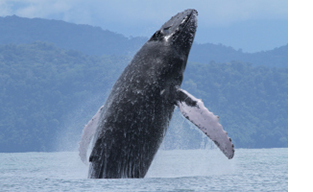 Lenin Oviedo: The marine protected area is much more than an exclusion zone, which are specifically designed for maritime traffic. A marine protected area will give a major scope of protection to particular areas that are important for the survival of these species. It’s not only that they will exclude maritime traffic, but they will safeguard particular geographical parts of the humpback whale range within Golfo Dulce. This is just a major step, it’s a huge step, but there are many other things that we need to do to achieve our goal of obtaining a marine protected area. The thing is that in the process of understanding what’s going on in Golfo Dulce, we are at the risk of having habitat destruction due to the coastal development that might take over the whole area. Golfo Dulce is beautiful. The scenery there is amazingly beautiful. But it is precisely this beauty that can be capitalized.
Lenin Oviedo: The marine protected area is much more than an exclusion zone, which are specifically designed for maritime traffic. A marine protected area will give a major scope of protection to particular areas that are important for the survival of these species. It’s not only that they will exclude maritime traffic, but they will safeguard particular geographical parts of the humpback whale range within Golfo Dulce. This is just a major step, it’s a huge step, but there are many other things that we need to do to achieve our goal of obtaining a marine protected area. The thing is that in the process of understanding what’s going on in Golfo Dulce, we are at the risk of having habitat destruction due to the coastal development that might take over the whole area. Golfo Dulce is beautiful. The scenery there is amazingly beautiful. But it is precisely this beauty that can be capitalized.
El área marina protegida es mucho más que una zona de exclusión, que está específicamente diseñada para el tráfico marítimo. Un área marina protegida brindará un mayor grado de protección a áreas particulares que son importantes para la supervivencia de estas especies. No es solo que excluirán el tráfico marítimo, sino que protegerán partes geográficas particulares del área de ballenas jorobadas dentro de Golfo Dulce. Este es solo un paso importante, es un gran paso, pero hay muchas otras cosas que debemos hacer para lograr nuestro objetivo de obtener un área marina protegida. El problema es que, en el proceso de comprender lo que está sucediendo en Golfo Dulce, corremos el riesgo de tener destrucción del hábitat debido al desarrollo costero que podría invadir el área completa. Golfo Dulce es hermoso. El paisaje allí es increíblemente hermoso. Pero es precisamente esta belleza la que puede ser capitalizada.
.
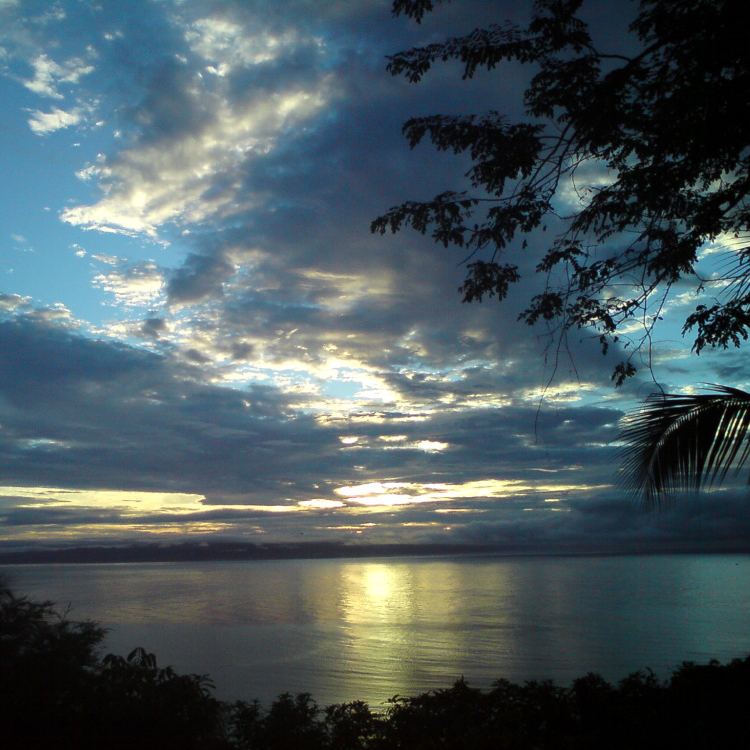
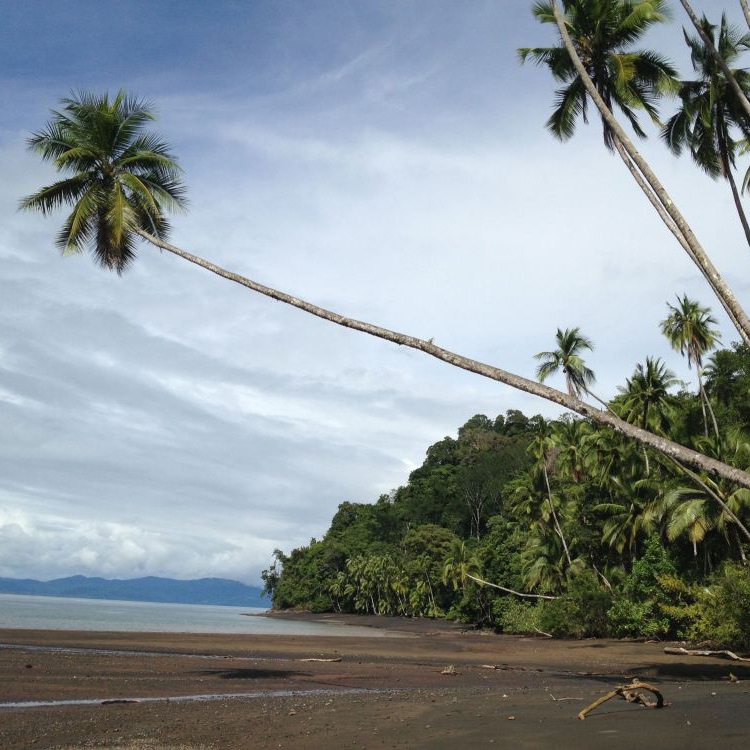
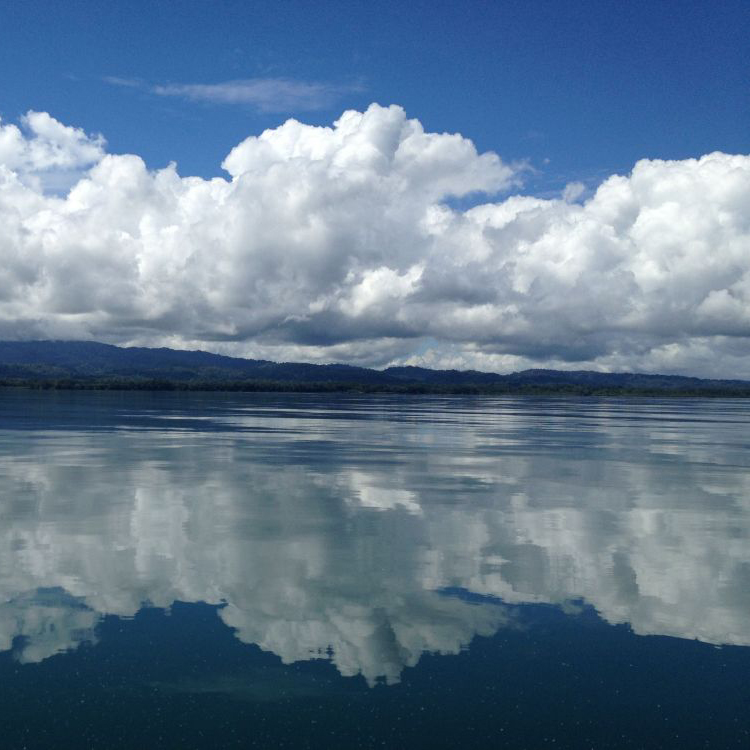
.
Earthwatch: So it sounds like you guys are kind of in a race against time.
Entonces parece que ustedes están en una carrera contra el tiempo.
Lenin Oviedo: Sometimes it is frustrating because it is hard not going as fast as we want. And it is this major communication between the decision makers and this technical side of scientific working to apply knowledge into conservation efforts and decision making. Sometimes it’s hard for us to see that the decision makers might not understand and might not see what we see. And sometimes we just lose it, like ‘How can you not see that we have babies in this land, for god’s sake?’
A veces es frustrante porque es difícil no ir tan rápido como queremos. Y es esta gran comunicación entre los que toman las decisiones y esta parte técnica del trabajo científico para aplicar el conocimiento a los esfuerzos de conservación y la toma de decisiones. A veces es difícil para nosotros ver que los que toman las decisiones quizás no comprendan y no vean lo que vemos. Y a veces simplemente lo perdemos, como ‘¿Cómo no puedes ver que tenemos crías en esta tierra?, por el amor de Dios.
.
Earthwatch: What role did Earthwatch volunteers play in securing this exclusion zone?
¿Qué rol tomaron los voluntarios de Earthwatch para asegurar esta zona de exclusión?
Lenin Oviedo: The main objective of our project in Golfo Dulce since we started out with Earthwatch has always been to purely identify the critical habitat of all the cetaceans that are inhabiting the area. This is critical habitat for the bottlenose dolphin, the spotted dolphin, and for humpback whales. For the dolphins, it’s a foraging critical habitat. That’s where they get their energy. For the humpback whales, it’s the calving habitat. That’s where they safeguard their babies. In order to know everything that I’m telling you right now, we have to be in the sea. We have to carefully observe the behavior of these species, and we have to carefully take data that will allow us to say scientifically that I saw what I saw, and these were the conditions by the time I saw that and these were the conditions by the time there were no animals. That way we can compare. Well, every single volunteer was responsible of handling this kind of data. Every single set of GPS coordinates that they gave us, every single animal count… All this is translated right now into information that was provided in order to inform conservation.
And there’s another side to this story. It’s the side of the local involvement. Earthwatch has been a platform for community members to actually get to work in safeguarding their home and empowering them to be owners of that natural heritage. It’s not only about whales and dolphins, it’s a lot about humans and how they feel about whales and dolphins in Golfo Dulce.
.
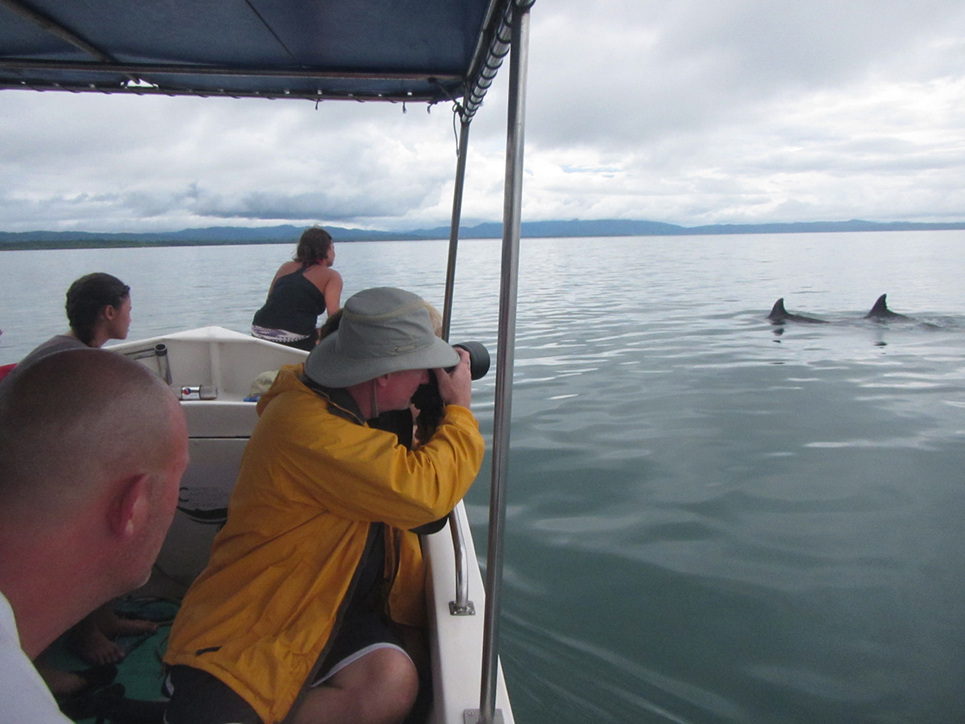
Earthwatch volunteers document dolphins during the expedition Marine Mammals and Predators in Costa Rica.
.
El objetivo principal de nuestro proyecto en Golfo Dulce desde que comenzamos con Earthwatch siempre ha sido identificar de forma pura el hábitat crítico de todos los cetáceos que habitan el área. Este es un hábitat crítico para el delfín mular, el delfín moteado y para las ballenas jorobadas. Para los delfines, es un hábitat crítico de alimentación. De ahí es donde obtienen su energía. Para las ballenas jorobadas, es su hábitat de parto. Ahí es donde protegen a sus crías. Para saber todo lo que te estoy diciendo ahora, tenemos que estar en el mar. Tenemos que observar con cuidado el comportamiento de estas especies, y tenemos que tomar los datos con cuidado lo cuales nos permitirán decir científicamente que vi lo que vi, y estas fueron las condiciones en el momento en que lo vi y estas fueron las condiciones en el tiempo cuando no había animales. De esa forma podemos comparar. Bueno, cada voluntario era responsable de manejar este tipo de datos. Cada conjunto de coordenadas de GPS que nos dieron, cada conteo de animales… Todo esto se traduce ahora en información que se proporcionó para informar la conservación.
Y hay otro lado de esta historia. Es el lado de la participación local. Earthwatch ha sido una plataforma para que los miembros de la comunidad realmente trabajen para proteger su hogar y empoderarlos para ser dueños de ese patrimonio natural. No se trata solo de las ballenas y los delfines, sino también de los humanos y de cómo se sienten sobre las ballenas y los delfines en Golfo Dulce.
.

.
Earthwatch: Now that the exclusion zone has been secured, will the research change to focus on collecting the data required to achieve a marine protected area?
Ahora que se ha asegurado la zona de exclusión, ¿cambiará la investigación para concentrarse en la recopilación de los datos necesarios para lograr un área marina protegida?
Lenin Oviedo: The project, as everything, has to evolve. We already have good and sound answers for our initial research question, but we’ve still got a lot to do and much to uncover. For instance, keeping on the subject of humpback whales, we now understand that Golfo Dulce is an important calving habitat, but it’s only part of a major calving habitat in Central America. Let’s say we achieve a marine protected area and we achieve some other major protection strategies for our humpback whales in Golfo Dulce. What will happen if other places in the whole Central American range don’t have these same protections? Now, we are looking to a regional stage in order to increase the protection of our whales, and it’s the same with our dolphins.
We believe that our bottlenose dolphins are the resource population of many small populations along Panama and Nicaragua. Now, we have to widen our view and not only concentrate on Golfo Dulce, but to see where exactly these individuals go. What if they’re going to places that are not really as safe as Golfo Dulce? They know no borders. For them, it’s home, it’s critical habitat. It doesn’t matter if it’s located in Panama, Costa Rica, or in Nicaragua. So understanding where our dolphins come from, why they like Golfo Dulce, whether or not the Golfo Dulce population is connected with some other population, and what do we need to do to actually preserve these species—that would be our next step.
.
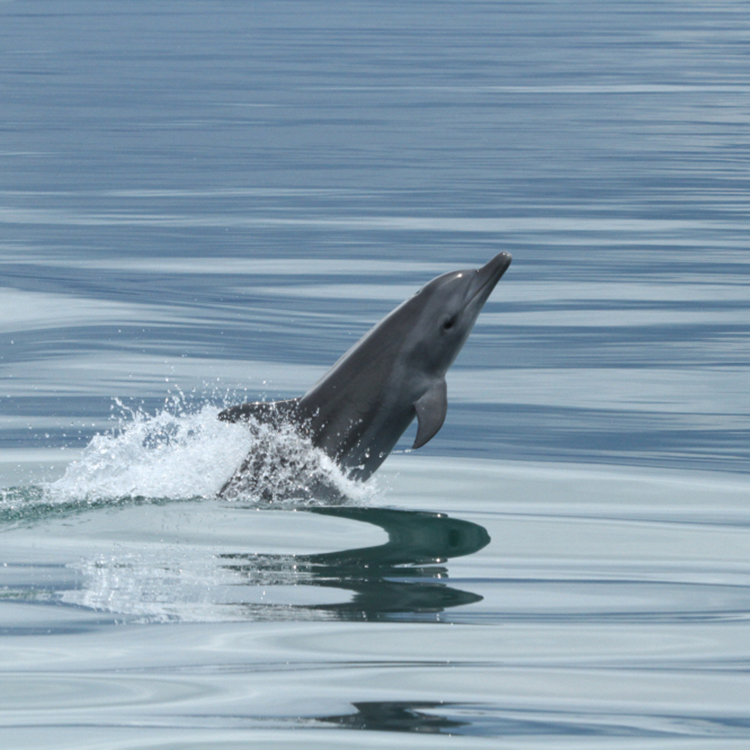
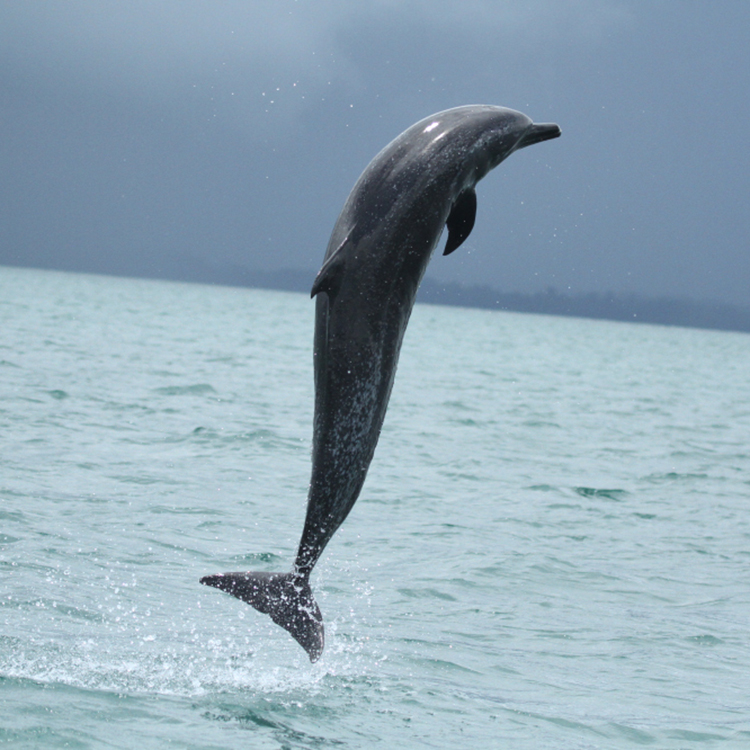

.
El proyecto, como todo, tiene que evolucionar. Ya tenemos respuestas buenas y sólidas para nuestra pregunta de investigación inicial, pero todavía tenemos mucho por hacer y mucho por descubrir. Por ejemplo, en el tema de las ballenas jorobadas, ahora entendemos que Golfo Dulce es un hábitat importante de parto, pero es solo parte de un gran hábitat de parto en América Central. Digamos que logremos tener un área marina protegida y logremos algunas otras estrategias de protección importantes para nuestras ballenas jorobadas en Golfo Dulce. ¿Qué pasará si otros lugares en el área de América Central no tienen estas mismas protecciones? Ahora, estamos buscando una plataforma regional para aumentar la protección de nuestras ballenas, y es lo mismo con nuestros delfines.
Creemos que nuestros delfines mulares son la población de la cual provienen muchas poblaciones pequeñas a lo largo de Panamá y Nicaragua. Ahora, debemos ampliar nuestra vista y no solo concentrarnos en Golfo Dulce, sino también ver exactamente a dónde van estos delfines. ¿Qué si van a lugares que no son tan seguros como Golfo Dulce? Ellos no conocen fronteras. Para ellos, es su hogar, es un hábitat crítico. No importa si está ubicado en Panamá, Costa Rica o en Nicaragua. Entonces, entender de dónde vienen nuestros delfines, por qué les gusta Golfo Dulce, si la población de Golfo Dulce está conectada o no con otra población, y qué necesitamos hacer para preservar realmente estas especies, ese sería nuestro siguiente paso.
.
Earthwatch: Is there anything else you wanted to add?
¿Hay algo más que quiera agregar?
Lenin Oviedo: It’s important to say thank you to all my volunteers—to every single one of them. To let them know that this exclusion zone is as much of their achievement as it is our achievement and as it is everyone in Costa Rica’s achievement. It’s important to let them know that we consider them part of the team, and we are so proud to say we did it. We did a great job all together.*
Es importante agradecer a todos mis voluntarios, a cada uno de ellos. Para hacerles saber que esta zona de exclusión es tanto su logro así como es nuestro y también logro de todos en Costa Rica. Es importante hacerles saber que los consideramos parte del equipo, y estamos muy orgullosos de decir que lo hicimos. Hicimos un gran trabajo todos juntos.*
*This interview has been edited and condensed for clarity.
*Esta entrevista ha sido revisada y condensada para mayor claridad.
.
Sign up for the Earthwatch Newsletter
Be the first to know about new expeditions, stories from the field, and exciting Earthwatch news.